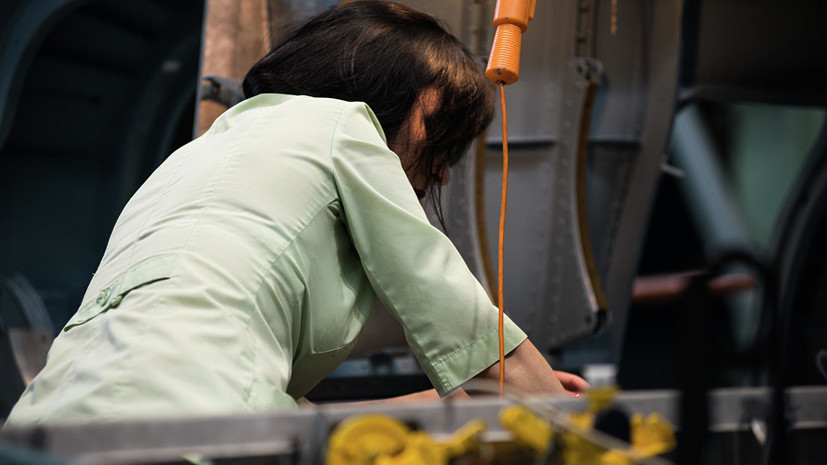As told RT at the Research Institute of Occupational Medicine named after academician N.F. Izmerov, the most negative impact on the reproductive health of women is exerted by areas of activity related to the influence of chemical factors (painter, gas station operator, cleaner, galvanic, foundry and other professions) and vibration (driver, engraver, road builder, riveter, grinder).
Particularly at risk for women's reproductive health is work related to microorganisms. This group includes employees of medical institutions and research laboratories, water treatment plants, food industry, livestock.
In addition, the extreme microclimate affects the ability of women to give birth to healthy children. In this regard, work in workshops with refrigeration equipment or furnaces, in the open air in extreme climates (both cold and hot), is of particular danger.
Also, women are not recommended to work as packers, riggers and shapers, as these professions are associated with weight lifting, which, in turn, negatively affects the work of the female reproductive system.
The Scientific Research Institute of Occupational Medicine emphasized that the spheres of activity associated with exposure to electric, magnetic and electromagnetic fields negatively affect the reproductive function.
As for male reproductive health, it is also affected by the above negative working conditions (except for the severity of the work process), experts say.
It is noted that the impact of harmful production factors on both parents can cause disturbances in the formation of organs in children, lead to genetic malfunctions, miscarriages and stillbirths.
“Reproductive health is influenced by many factors included in the concept of“ lifestyle ”: poor nutrition, bad habits, low physical activity, lack of sleep, psycho-emotional overload, which act in conjunction with occupational risk factors, increasing the risks of reproductive pathologies,” consider Research Institute of Occupational Medicine.
On August 15, the Ministry of Labor approved a list of posts and industries that impose restrictions on the employment of women in connection with dangerous and harmful working conditions.
The list includes 100 items. For example, restrictions are introduced on the work of women in chemical production, underground and mining, metal processing facilities, oil and gas production.

